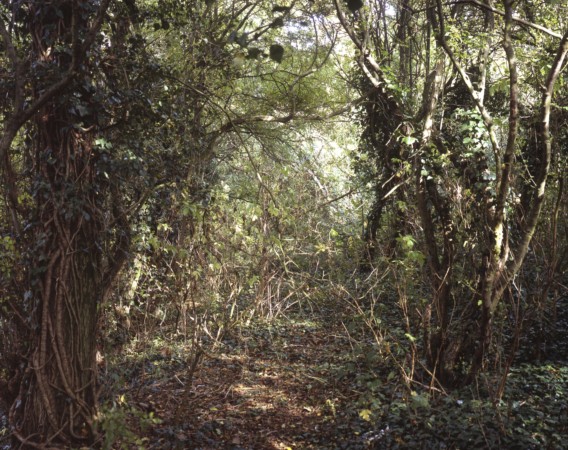
Secret Gardens
My work photographing these often overlooked areas of abundant natural life began with an incident in my own life. In the summer of 2007 my dog suffered a massive blood clot on her spine, causing instant paralysis that was treated and thankfully cured with major surgery. Whilst watching her heal, her skin fuse back together and her shaven hair grow back, I became increasingly aware and amazed by how nature, often with a little help from man can be left to recover and heal scars which at the time of their occurrence can appear irreversibly damaging.
‘Secret Gardens’ tells the story of how places that have been disrupted by man’s activities can be healed by nature to create some of the richest habitats. These overgrown areas work to maintain equilibrium between man’s activities and the delicate make-up of the world. The series was shot around my home in a small Midlands coal-mining town, but I want the spaces photographed to be representative of anywhere. These often forgotten spaces are universally present across the world and form an important part of our ecosystem that requires preservation. The photographs are my own quiet reaction to the catastrophic images of man’s devastation of our natural world, which are omnipresent in our media. I want to show that devastation of the environment happens on a small scale, everywhere, everyday but that given a little time and space nature has the power to resolve this damage.
The photographs are influenced by 19th Century European romantic landscape painters such as Caspar David Friedrich, whose work depicted a close observation of nature. However, unlike Friedrich they relate more to the landscape as influenced by man, rather than the religious force that resonates in his paintings. The ‘religious’ force in these images can be seen as a biological system, namely that of Gaia as described by James Lovelock;
“The idea of the Earth as a kind of living organism, something able to regulate its climate and composition so as always to be comfortable for the organisms that inhabited it.”1
The photographs are shot with long exposures, slowed down to allow elements of the landscape’s memory to enter the images, and movement to express the conflict of the plants with the modern environment. This use of the landscape to express conflicts between man and nature can also be seen as relating back to a major theme in romantic painting, as the romantics looked towards nature to express an ideal that could not be found in contemporary life. In a similar way, the photographs use these small, conflicting areas of wilderness as an antidote to the poisons of contemporary society.
“ It is vain to dream of a wilderness distant from ourselves. There is none such.’2
1) Lovelock, James. ‘Gaia: A new look at Life on Earth’ xv University Press: Oxford 2000
2) Thoreau, Henry David in Schama, Simon ‘Landscape and Memory’ Random House: New York 1995